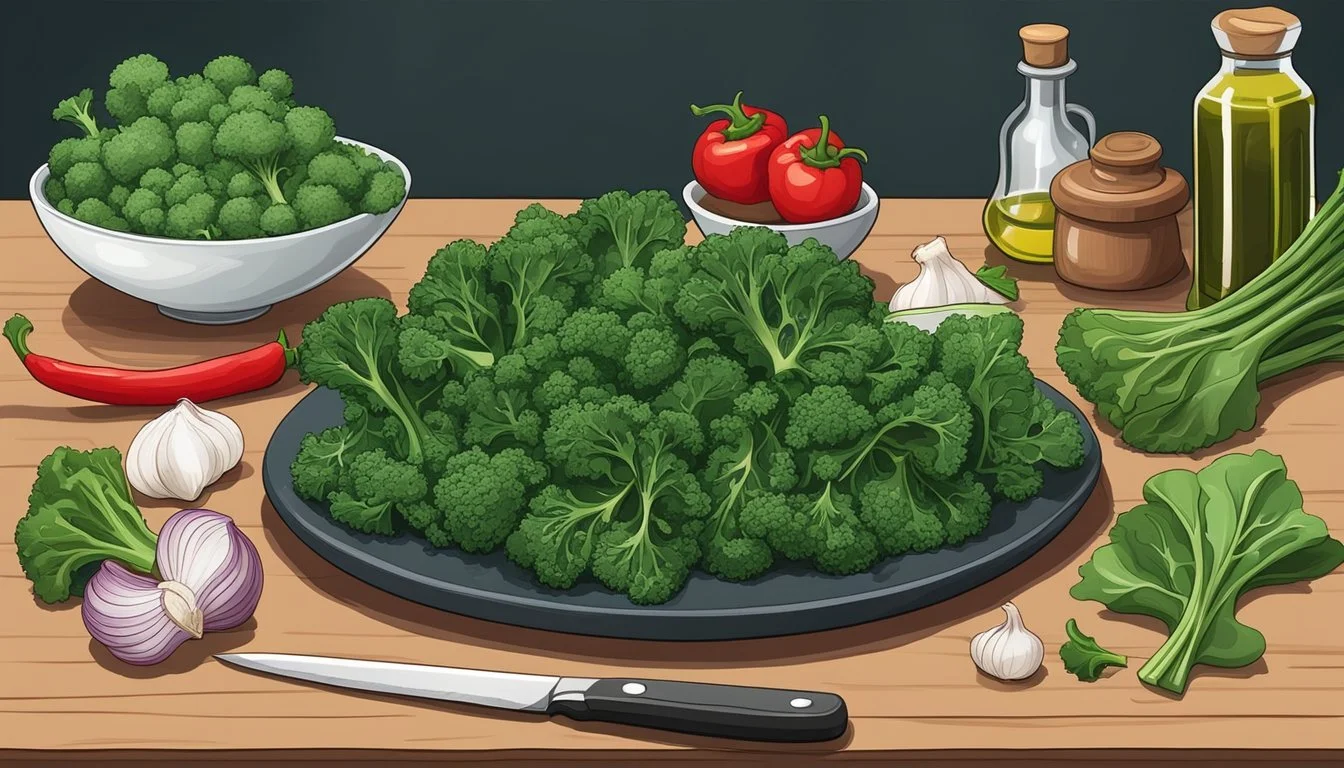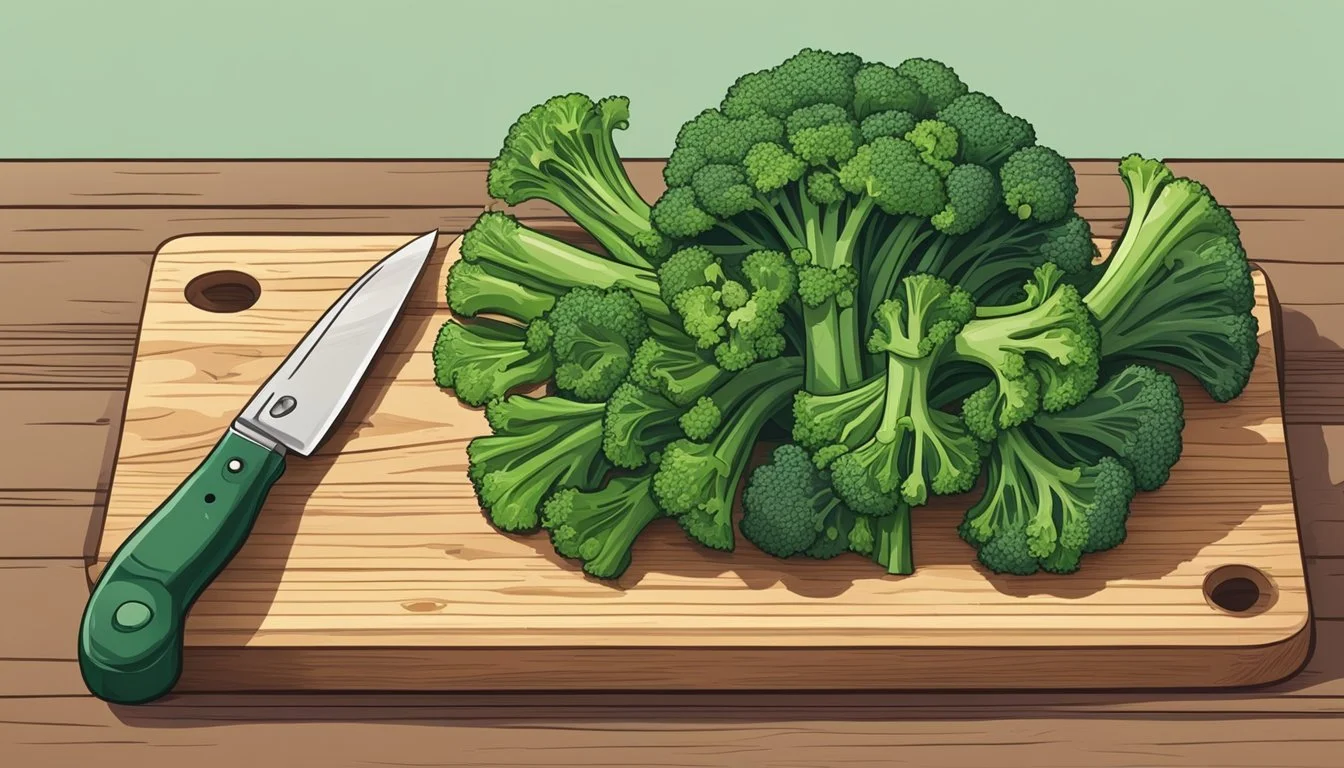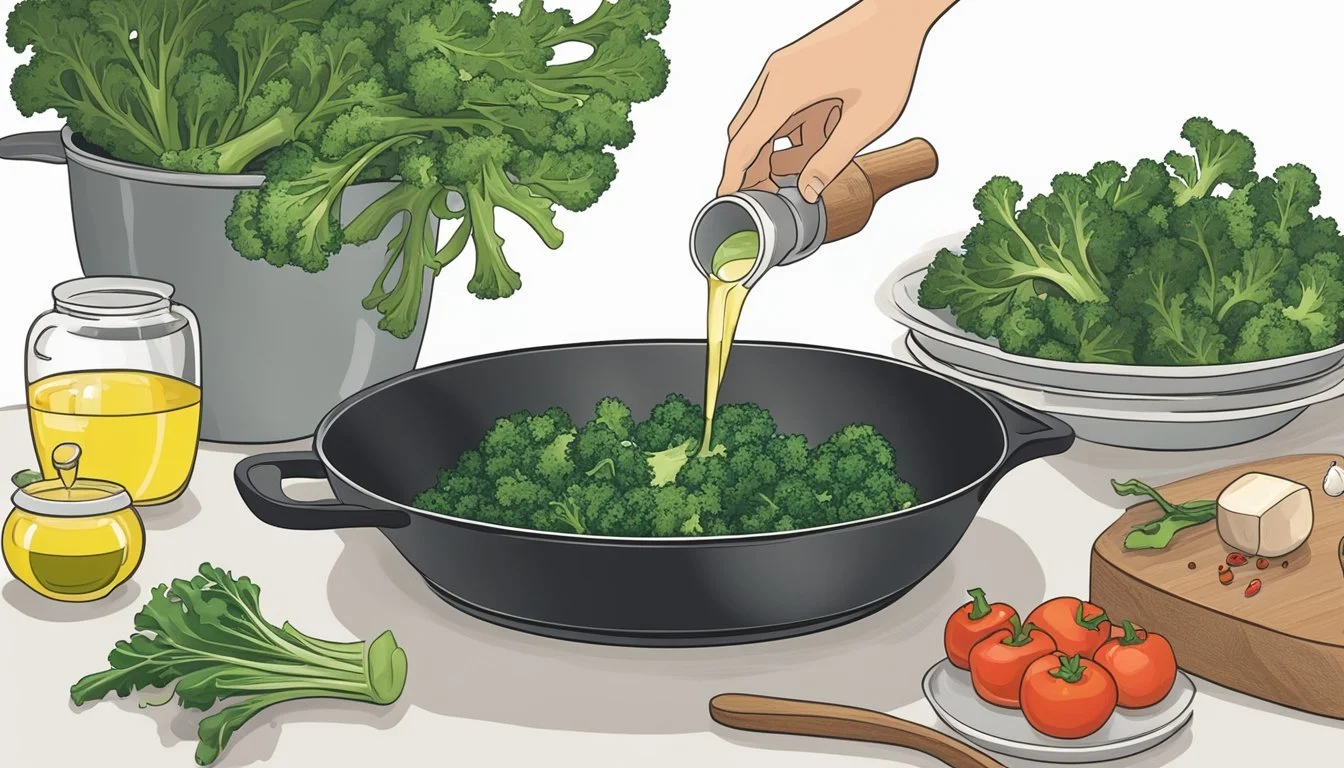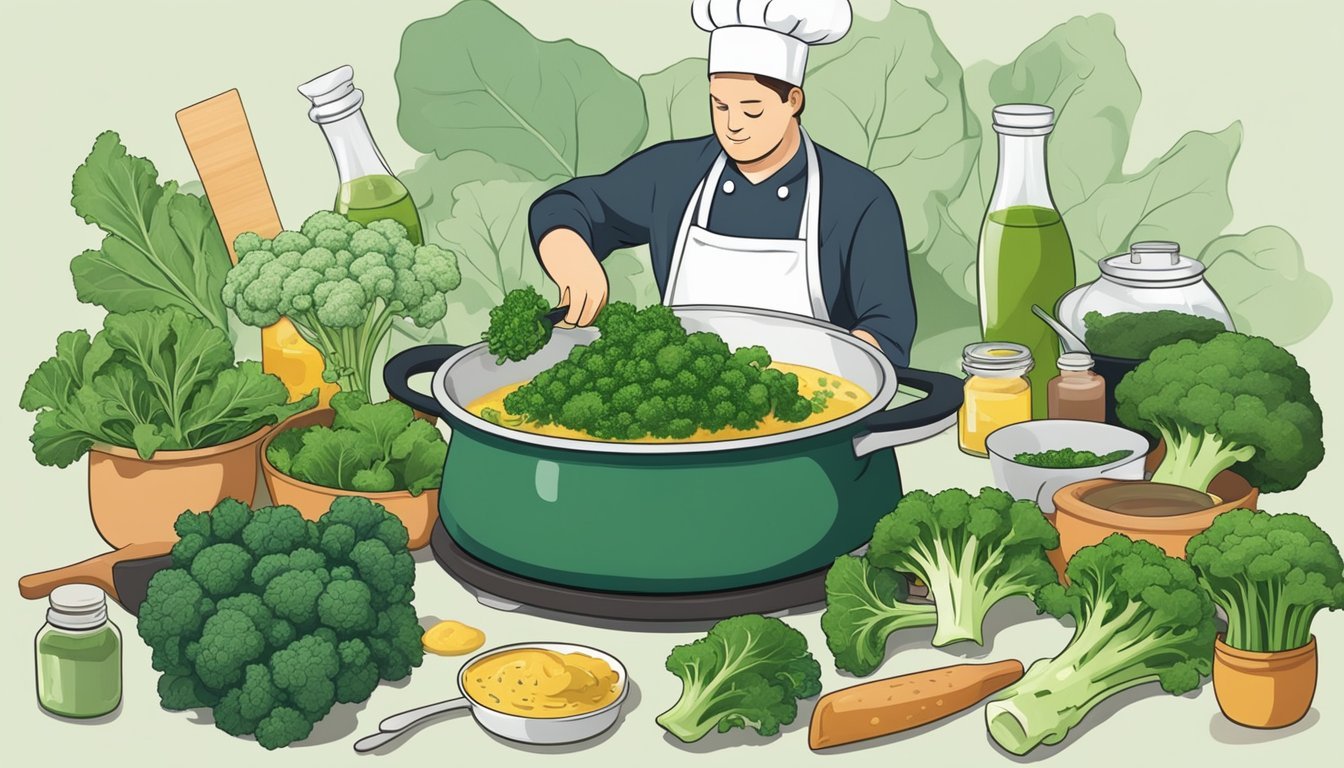Broccoli Rabe Substitutes
Top Alternatives for Your Recipes
Broccoli rabe, also known as rapini, is a green cruciferous vegetable with a bitter taste that is often used in Italian cooking. Its earthy, nutty flavor can add complexity to a variety of dishes, from pasta to stir-fries. However, not everyone enjoys its sharp bitterness, or it may simply be unavailable at the local market, prompting a search for suitable substitutes. When seeking an alternative, it's important to consider how the substitute will interact with the other flavors in the recipe.
Several vegetables can act as substitutes for broccoli rabe in cooking, allowing for a similar texture or complementary flavor profile. Mustard greens, for example, offer a comparable peppery bite and can be used in similar applications, such as sautéing with garlic or blanching. Escarole, a leafy green with a milder bitterness, can serve as a stand-in while providing a softer texture. For those preferring a less bitter taste, broccolini is a hybrid of broccoli and Chinese kale that delivers a milder, sweeter essence while still retaining a crunch.
These alternatives not only provide the versatility needed for a variety of recipes but also cater to different palates and dietary preferences. They enable cooks to adapt ingredients based on availability, ensuring that the chosen substitute compliments the overall dish while meeting the recipe’s requirements. Whether adjusting for taste, texture, or simplicity, incorporating an appropriate substitute can yield a successful and satisfying culinary experience.
Understanding Broccoli Rabe
Broccoli rabe, with its distinctive taste and use in various dishes, is a notable leafy green vegetable in Italian cuisine and beyond.
Characteristics of Broccoli Rabe
Broccoli rabe, also known as rapini, stands out for its bitter and peppery flavor profile, often described as earthy. It is characterized by its slender stalks, surrounding leaves, and small, broccoli-like florets. Unlike its cousin, broccoli, which has a milder taste, broccoli rabe brings a unique zest to the palate, making it a distinctive ingredient in the cruciferous vegetable family.
Nutritional Profile
Broccoli rabe is not only praised for its bold flavor but also for its nutritional benefits. Rich in nutrients, this leafy green is an excellent source of vitamins A, C, and K, and contains important minerals such as iron, calcium, and potassium. Here is a brief overview of its nutritional content per 100 grams:
Calories: 22 kcal
Protein: 2.85 g
Vitamin A: 262 mcg
Vitamin C: 20 mg
Vitamin K: 224 mcg
Calcium: 108 mg
Iron: 2.14 mg
Culinary Uses
In terms of its culinary uses, broccoli rabe is versatile. It can be enjoyed raw or cooked, though cooking often helps mellow its bitterness. Commonly featured in Italian cooking, this vegetable pairs well with pasta, garlic, and olive oil. It can serve as a side dish or be incorporated into main courses, such as sautéed with sausage or blanched and mixed into frittatas. Whether used as a complement to a dish or as the star ingredient, broccoli rabe adds a rich, savory element to a variety of recipes.
Common Substitutes and Their Profiles
When seeking alternatives to broccoli rabe, it's important to consider flavor profile and texture. The substitutes listed here offer a range of tastes from peppery and bitter to mild and nutty, while also providing a host of vitamins and nutrients.
Mustard Greens
Mustard greens present a somewhat similar peppery and bitter flavor as broccoli rabe. They are nutritious, with varieties ranging in color and flavor intensity, all equally rich in vitamins A, C, and K.
Turnip Greens
The greens of the turnip plant are less bitter than mustard greens, offering a milder flavor that complements many dishes. Turnip greens are packed with nutrients and make a good cooked alternative to broccoli rabe.
Collard Greens and Kale
Collard greens stem from the cabbage family and impart a slightly bitter taste, while kale provides a more nuanced, nutty flavor. Both are sturdy, nutritious greens rich in vitamins and fiber, suitable for a variety of cooked dishes.
Arugula and Dandelion Greens
Arugula's notable peppery taste and dandelion greens' subtle bitterness can mirror broccoli rabe's pungent qualities. These greens are typically used fresh but can also be lightly cooked to complement salads and pasta.
Cabbage and Chinese Broccoli
Cabbage offers a sweeter taste but can be used as a bulky substitute, whereas Chinese broccoli, or gai lan, has a slightly more bitter edge, much like broccoli rabe. Both are versatile in cooking and rich in essential nutrients.
Swiss Chard and Escarole
Swiss chard has a milder, slightly sweet and earthy taste. Escarole, with its broad, pale green leaves, provides a less intense bitterness than broccoli rabe. Each of these can be eaten raw or cooked, offering versatility along with their nutritious content.
Substituting in Recipes
When cooking, one may need to replace broccoli rabe due to availability or flavor preference. The following sections provide guidance on appropriate substitutes in various types of dishes while keeping in mind taste compatibility and maintaining the integrity of the recipe.
Salads and Side Dishes
In salads and side dishes, one often looks for a vegetable that can be served raw or lightly cooked. Escarole is beneficial due to its slightly bitter taste which resembles broccoli rabe. It can be used in a raw state in salads or sautéed with garlic and olive oil as a side. Similarly, mustard greens offer a peppery flavor that stands out in salads and complements side dishes when sautéed or steamed.
Salad Option:
Escarole - raw, chopped
Olive oil and garlic - for dressing
Side Dish Option:
Mustard greens - sautéed with garlic in olive oil
Pasta and Main Courses
Broccoli rabe is often featured in Italian pasta and main course dishes. Bok choy works as an alternative with its celery-like flavor, suitable for stir-frying and integrating into recipes with pasta. For recipes needing the green's robust character, mustard greens can be included to mimic the bitter and peppery notes of broccoli rabe in various dishes, especially when paired with robust flavors like garlic.
Pasta Option:
Bok choy - sautéed with olive oil and garlic, added to pasta
Main Course Option:
Mustard greens - incorporated into robust, flavorful main dishes
Soups and Stews
For soups and stews that classically contain broccoli rabe, substitutes should have the ability to withstand prolonged cooking without losing texture or flavor. Swiss chard can be introduced into soups and stews as it holds up well during cooking and imparts a milder flavor that won't overpower the dish's overall taste profile.
Soup/Stew Option:
Swiss chard - added during the last minutes of cooking to maintain texture
Carefully choosing a substitute based on the type of dish ensures that the original dish's essence and flavor harmony remain intact.
Tips for Cooking with Substitutes
When replacing broccoli rabe in recipes, cooks often seek alternatives that align with the bitter and peppery notes of the original ingredient. The success of a substitute boils down to a blend of texture and flavor compatibility, especially in customary preparations like sautéing, roasting, and grilling.
Sautéing: For dishes that call for sautéed broccoli rabe, escarole can be a formidable stand-in. It should be cooked with garlic in olive oil until the leaves are wilted and tender, retaining a bite that's similar to broccoli rabe.
Roasting or Grilling: For a substitute that takes well to roasting or grilling, broccolini works excellently as its florets and stalks caramelize well, similar to broccoli rabe. However, its milder flavor might need a boost from spices or aromatics.
Here is a simple guide to prepare substitutes:
Substitute Preparation Cooking Tips Escarole Separate leaves; wash thoroughly. Sauté with garlic; cook until tender. Can be slightly bitter raw. Bok choy Chop stems and leaves separately. Stir-fry stems first, then add leaves. Mild celery flavor. Mustard greens Remove tough stem; chop leaves. Use in sautéed dishes for a peppery taste. Eat raw or cooked.
Three key tips for cooks using these substitutes:
Adjust bitterness: If the substitute is less bitter, consider adding a pinch of crushed red pepper to mimic broccoli rabe's distinct flavor.
Stem consideration: Substitutes like bok choy and mustard greens have a tough stem that may require longer cooking times or pre-steaming to soften.
Season appropriately: Broccoli rabe substitutes may require different seasoning adjustments to enhance their unique flavors when replacing in recipes.
Health Benefits and Considerations
When considering substitutes for broccoli rabe, it's important to assess each alternative's nutritional profile and how they align with individual dietary needs. Here's a look at the health benefits and considerations for each broccoli rabe alternative.
Vitamins and Minerals
Broccoli rabe is known for its content of vitamins A, C, and K, as well as minerals such as potassium and iron. Substitute vegetables should offer similar nutritional benefits to maintain a balanced diet. For instance:
Bok choy: Rich in Vitamin C, Vitamin A, and calcium.
Collard greens: High in Vitamin A, Vitamin C, Vitamin K, calcium, and iron.
Mustard greens: Contain high levels of Vitamin A, Vitamin C, and Vitamin E.
Dietary Diversity
Incorporating a variety of vegetables into one's diet can provide an array of nutrients, which is important for overall health. Bitter greens like escarole and mustard greens add not only diverse flavors suited for Italian cuisine but also a broad range of antioxidants. Meanwhile, vegetables such as bok choy, commonly used in Chinese cuisine, can introduce different phytochemical compositions beneficial for health.
Cruciferous vegetables: Like broccoli rabe, cruciferous vegetables such as Chinese broccoli and kale are known for their cancer-fighting properties.
Leafy greens: Adding leafy greens like spinach and chicory to the diet increases dietary fiber intake, supporting digestive health.
Allergies and Sensitivities
Substitutes for broccoli rabe must be chosen with personal sensitivities in mind as various vegetables can trigger allergic reactions in susceptible individuals. Alternatives should provide similar health benefits without causing adverse reactions.
Cruciferous vegetable sensitivity: Some individuals might exhibit gas or bloating with cruciferous vegetables. Options like spinach or escarole could be gentler on sensitive stomachs.
Oxalates in greens: Vegetables high in oxalates, such as spinach, might not be suitable for those with a propensity to form kidney stones.
By reflecting on these health benefits and considerations, one can make informed decisions when picking suitable broccoli rabe substitutes that cater to both nutritional needs and personal health considerations.
Exploring Less Common Alternatives
While the usual substitutes for broccoli rabe, like turnip greens and broccoli, are widely used, less common alternatives also offer unique flavors and textures that can enhance a variety of dishes.
Endive and Chicory
Endive and chicory are members of the cabbage family with a slightly bitter taste. While often eaten raw in salads, they can also be cooked to reduce bitterness. Chicory, a close relative of endive, brings a similar profile with added earthiness.
Endive: Offers a milder flavor when cooked; a versatile veggie from the cabbage family.
Chicory: Notable for its bitterness, which can substitute broccoli rabe's sharpness in cooked dishes.
Cavolo Nero and Bok Choy
Cavolo Nero, also known as Tuscan kale, is a type of cabbage that is part of the brassica family. It has a robust flavor that softens when cooked. Bok choy, a hybrid vegetable, presents a milder taste with hints of celery and is both a textural and flavorful substitute for broccoli rabe in stir-fries and sautés.
Cavolo Nero: It contributes a hearty, somewhat peppery taste, and its dark, lacinato leaves offer a nutrient-dense option.
Bok Choy: Recognized for its crisp texture and a softer flavor profile which can balance dishes that require a less dominant veggie.
Brussels Sprouts
These tiny cabbages from the brassica family mimic the nutty and savory flavors of broccoli rabe when roasted or sautéed. Their inherent sweetness emerges with caramelization and presents an appealing contrast to the bitterness typical of broccoli rabe.
Brussels Sprouts: They are best utilized when looking for a sweet yet savory depth in dishes that traditionally include broccoli rabe.
Conclusion
Broccoli rabe, known for its slightly bitter taste, plays a significant role in various cuisines, particularly Italian. When considering substitutions, individuals have multiple options that cater to different flavor profiles and cooking requirements.
Turnip Greens: Resemble the sharpness of broccoli rabe and work well in sautéed dishes.
Chinese Broccoli: Offers a similar bitter edge, suitable for stir-fries and steamed preparations.
Bok Choy: While less bitter, it adds a celery-like flavor and is versatile in cooking methods.
Spinach: Provides a milder taste and is an adaptable choice, although it differs in texture.
Escarole: Has a bitterness that can be mellowed through cooking, excellent in both raw and cooked forms.
Substitutes should be chosen based on the desired bitterness and the cooking application. Spinach, for instance, might be preferred for those looking to reduce the bitterness, but it may not hold up well in high-heat cooking. In contrast, Chinese broccoli maintains a closer textural similarity to broccoli rabe, making it a robust alternative for most recipes.
When selecting a broccoli rabe substitute, chefs and home cooks should note the individual characteristics of these alternatives. The variety allows for flexibility and creativity in the kitchen, ensuring dishes can be tailored to personal tastes while maintaining the integrity of the recipes they are adapting.








